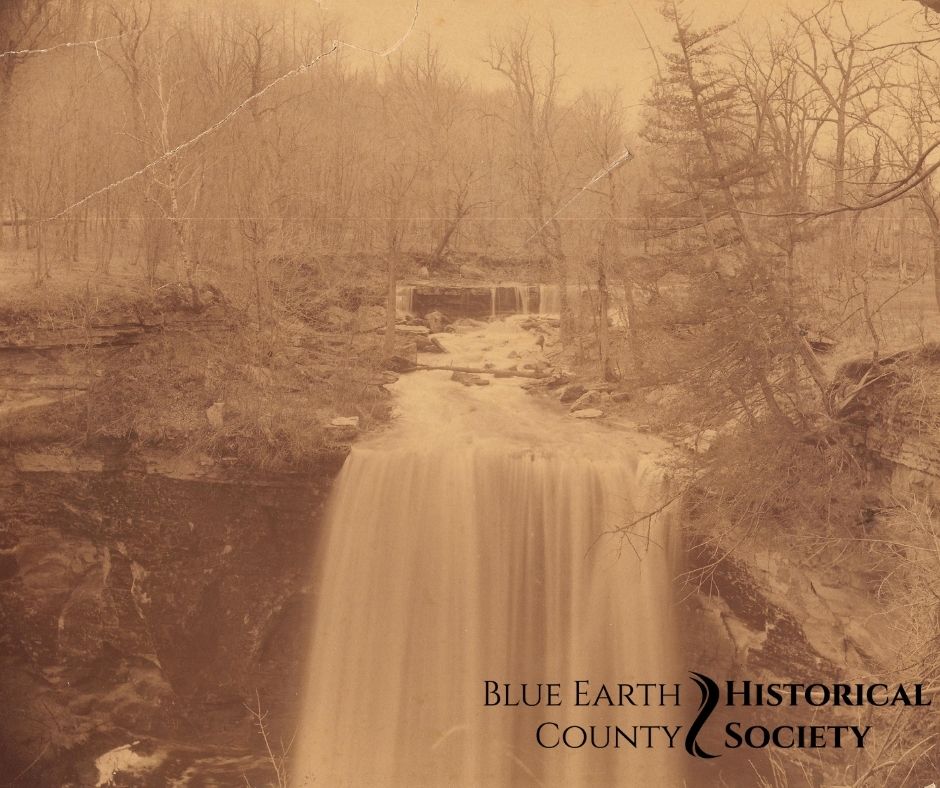 The area around Minneopa Falls became a state park in 1906. However, it had been a popular recreational area for many previous years, even offering its own vacation hotel.
The area around Minneopa Falls became a state park in 1906. However, it had been a popular recreational area for many previous years, even offering its own vacation hotel.
Minneopa Creek, called Lyon’s Creek on early maps, is about twelve miles long, draining from Lily, Crystal, and Loon Lakes near Lake Crystal, and emptying into the Minnesota River in the new northern portion of the park. The area was known as Minneinneopa by the indigenous people, translated as water-falling-twice, or two waterfalls. There is a rather heroic tale told about Chief Sintomnidata and his sister hiding from an angry husband in a cave near the falls. When the area was developed as a park, picnic tables were set up in that cave. The cave collapsed around 1900.
Miner Porter opened a hotel, or summer resort, near the falls in 1858. Porter came to South Bend in 1856 and spent years in the hotel business. Not only did he erect a building near the falls, he planted acres of trees, shrubbery, and flowers. There were winding walks, arbors, swings, and play equipment on the grounds. It was all surrounded by a board fence, with three arched gates, the highest or middle gate incorporating the name, Minneinneopa. The Blue Earth County Agriculture Association was organized at the hotel in October 1859, and the first agriculture fair was held there that same day. The Civil War and the United States/Dakota War made travel and vacationing difficult, and the hotel closed by 1870. The building became a private home known as the McConnell Farm and burned in 1906.
The next developer of the area was D.C. Evans, a South Bend farmer. Evans set out to make the area around the falls a park. His 1869 advertisement termed it “one of the most picturesque cataracts in the state.” He cleared some of the lands, built bridges over the creek, and constructed wooden steps down into the creek below the falls. The St. Paul and Sioux City Railroad, built in 1868-69 between Mankato and Lake Crystal ran along the creek. Evans convinced the builders to put a depot at Minneopa. In 1870 one could take the train from Mankato early in the morning, arrive at the Falls before noon, and be back in Mankato by 8:00. By 1883 it was a half-hour trip by team or 15 minutes by rail. There were four trains each way in 1904, and a round trip cost twenty cents. A piece in the Mankato Review in early 1882 suggested that “our people need some quiet resort near the city to which they can go after business hours if necessary, and more especially during the hot, sultry days of every summer.” There were excursions coming from Minneapolis/ St Paul, and huge camp meetings were often held in the area. It was also suggested the stop needed a good public house, or perhaps cabins for longer stays. However, persons were warned not to tie their houses to trees between the railroad and the falls.
The park and the depot were not enough for Evans. In 1870 he laid out a town site, which eventually included the depot, grain elevators, hotel, stores, blacksmith shop, a lumber yard, and other buildings. However, the grasshopper plague of 1875, which destroyed crops for three years, ended business for the grain elevator, and the village soon disappeared.
The area around the falls was subsequently sold several times, with 30 acres finally purchased by the State of Minnesota for a park. J.B. Hodge, who as the railroad depot agent had encouraged visitors to the area, became the park’s first superintendent. The park was enlarged over the years, including the portion located along the Minnesota River which was added in the 1970s.
By Hilda Parks


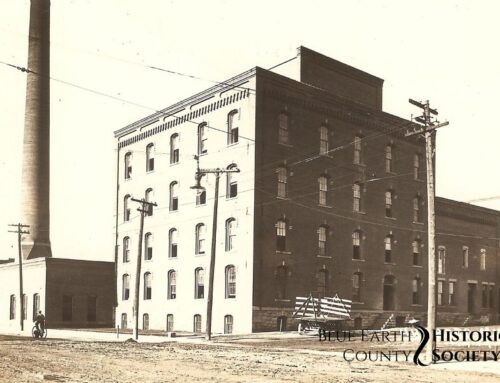
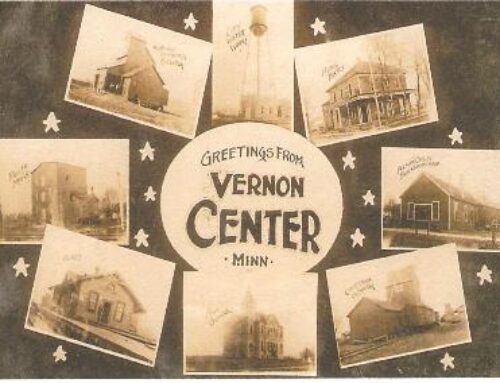
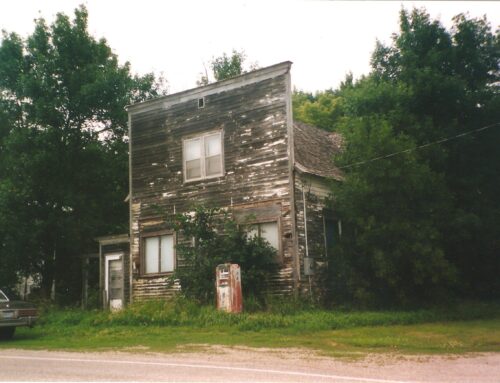
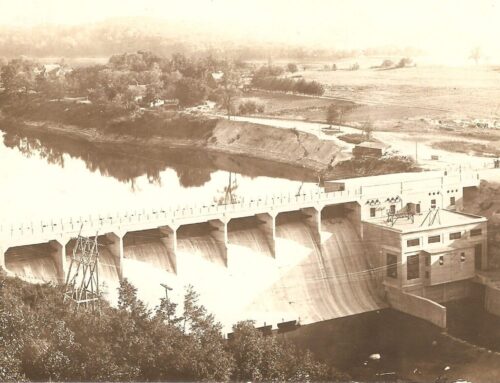
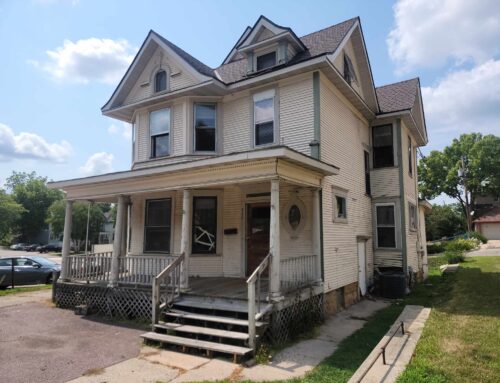
Leave A Comment